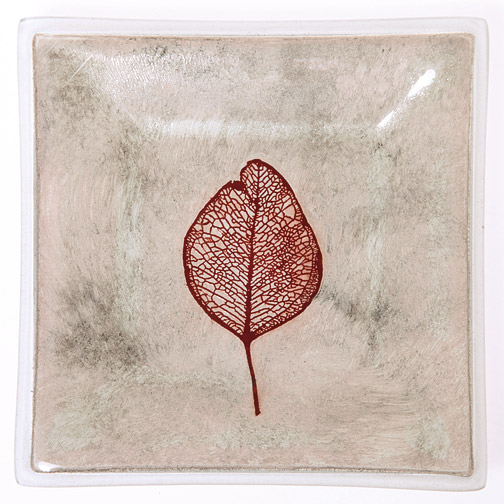Glass artist Steve Weinstock arrived at Brown in 1983 intending to
become an engineer. However, he says, “I took one engineering class and
realized I didn’t want to do it.” The class wasn’t entirely a waste,
though: one day, while he was wandering the corridors in the basement
of Barus and Holley’s labs, a handwritten cardboard sign labeled
“Holography” caught Weinstock’s eye. It led to the holography lab,
where Weinstock put his name on the waiting list for Professor Hendrik
Gerritsen’s class on the subject. It changed his life.

“My holograms were all about detecting light in something that wasn’t
physically there,” he says. “Glass was invisible, but it was still
physically there.” He switched his concentration to studio arts and,
using the glass studios at RISD, made sculptures in which a hologram
projected color and light into the glass.
In 1991, Weinstock flew to Prague to show his work at an arts festival. The country had recently been reopened to tourists after the fall of the Communist government, so he was able to visit the town of Železný Brod in Western Bohemia, a hub for traditional glassmaking.
“Everyone was involved in the glass industry,” he says. “The junior
high had a show with some of the most amazing pieces I’ve ever seen.”
Weinstock was drafted into helping set up a glass business in Prague. “I was an artist,” he says. “I had no experience with [starting a business], but it was all fun learning.” He was inspired to return to the United States and begin the process again, this time for himself.
In 1992, Weinstock founded Alchemy Glass & Light in Los Angeles
with fellow glass artist Michael Murphy. They started out making light
fixtures, but, when a client asked them to make a glass sink, they
struck gold. Their one-of-a-kind vessel sinks, designed to sit on top
of a counter, were an immediate hit with architects, interior
designers, and, ultimately, the public. “Fortunately for us, the
fashion sort of took off,” Weinstock says. Now, Alchemy’s product line
ranges from sinks to light fixtures, mirrors, and tableware.
Each piece is unique because fusing glass is unpredictable. It involves
layering glass and minerals—often copper—and heating them, which
produces the luminous colors. The temperature, humidity, and other
factors all influence the final results. “The natural color [from the
minerals in the glass] works in the way a butterfly wing has color,” he
says. “Depending on how you look at it, or how the light hits it, the
color changes.”
Weinstock treasures that unpredictability. “It’s much more inspiring to
be surprised by something you haven’t seen before,” he says.





